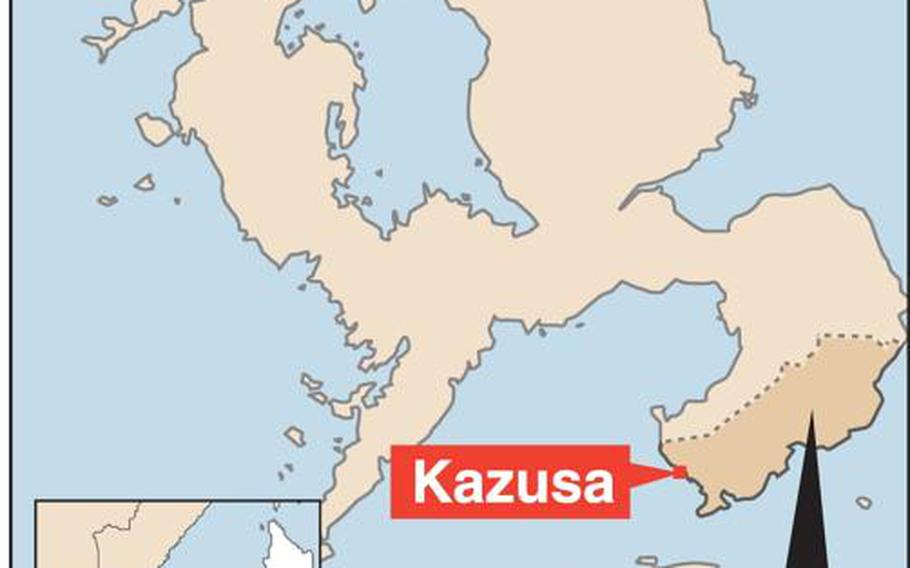
()
Two magnificent bottlenose dolphins came into view from the vast expanse beneath.
I could make out the markings and curvature of their distinct faces. Their powerful tails cut through the water with breathtaking force, propelling the massive beasts forward effortlessly. They came within a few feet of the surface, looking up at me with curiosity before slowly disappearing under a Kazusa Dolphin Watching vessel in late February.
Serenity came over me, the kind that accompanies having a front-row seat to the majesty that is raw, unbridled nature. At that moment, there was nothing else. I felt as though I had seen something so spectacular, so special, that it almost didn’t seem real. I was in awe.
Kazusa Dolphin Watching is cheap fun for the whole family and well worth the three-hour drive from Sasebo Naval Base on the southern Japanese island of Kyushu.
Tours run from the small fishing town of Kazusa in Minamishimabara for about an hour, into the waters between Nagasaki prefecture and Kumamoto prefecture’s Amakusa Island. There, approximately 300 bottlenose dolphins congregate in large groups just offshore.
The wild dolphins spend about three minutes under the water and about three minutes at the surface, according to Kazusa Dolphin Watching. A tour can seem more like a chase, as you follow the dolphins along as they pop to the surface, shooting air from their blowholes and descend.
They don’t seem to mind the fleet of tour boats from both prefectures that follow them like disciples, as they have become accustomed to Kazusa’s boats and the gentle rumble of their diesel engines.
The dolphins often jump playfully as they swim in front of the boats and slowly traverse underneath, as if they know they are the stars, and they dare not disappoint. They shoot air from their blowholes as if saying hello and twist and turn under the placid sea waters like freestyle gymnasts, giving onlookers a National Geographic-type view and experience.
Kazusa staffers recommend going to see dolphins in Japan’s warmer months. The dolphins spread out more when it is cold. They also recommend going around lunchtime when the dolphins tend to be closer to the Kazusa’s homeport and more relaxed.
From May through October, dolphin parenting can be observed as they travel with their young.
You are all but guaranteed to see dolphins on a Kazusa Dolphin Watching trip. If for some reason you don’t, Kazusa Dolphin Watching will provide you with a free ticket to come and try again, but they rarely have trouble spotting them. Base tours can help you make a reservation.
Kazusa Dolphin Watching is unlike the aquarium in that you get to travel with the pack, unhindered, without barriers — the way Mother Nature intended. It is a rare opportunity to see beautiful animals up close and personal in their natural habitat, flanked by beautiful snow-capped mountains.
Stare off into the blue-green water and see the sun’s reflection give way to a curious dolphin staring right back. Then watch your stresses melt away.
DIRECTIONS: Kazusa Dolphin Watching is located at 251-11 Kazusa-cho, Minamishimabara, Nagasaki prefecture. To get there, head south toward Omura. Take 205 to 34 to 57 to 251.
TIMES: Kazusa Dolphin Watching goes out four times per day year-round, at 10 a.m., 11:30 a.m., 1 p.m. and 2:30 p.m. From April through September, they go out a fifth time, at 4 p.m. Tickets should be booked in advance, between the hours of 8 a.m. and 6 p.m., seven days a week. Tickets can also be booked in Japanese online.
COSTS: Kids ages 4-7 cost 1,000 Yen; 7-13 cost 1,500 Yen. Adults are 2,500 Yen.
FOOD: small store on-site sells beverages and snacks.
INFORMATION: There’s more info online — in Kanji only — at iruka-watching.com. Or call 0957-87-4640.